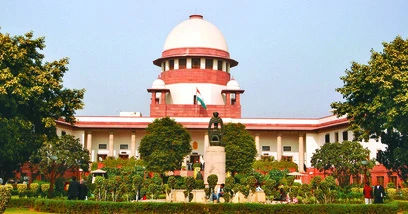The Supreme Court has directed the Jail Superintendents across the country to identify all undertrial prisoners, including women undertrials, who have undergone incarceration for either one-third or half of the maximum punishment prescribed for offences they are accused of, and send their cases to concerned courts for the grant of bail.
The order was passed on Tuesday by the Bench of Justice Hrishikesh Roy and Justice SVN Bhatti.
The Apex Court observed that it was looking at the last person behind the walls of prisons, whose voice they were not able to hear. Not a single prisoner eligible for the grant of bail under Section 479 of the Bhartiya Nagarik Suraksha Sanhita (BNSS) should be missed, it added.
The Bench further directed the Jail Superintendents to undertake a special drive to identify the women undertrial prisoners, including those lodged with their young children, eligible for bail under Section 479.
The top court of the country passed the order after perusing the statistics placed on record by Amicus Curiae Gaurav Agrawal and NALSA counsel Rashmi Nandkumar regarding the implementation of earlier Apex Court orders on expeditious release of undertrial prisoners.
The Bench expressed surprise over many undertrials, who were first time offenders, and were yet to be granted bail by trial courts.
As per Section 479 of BNSS, the undertrial prisoners, who are not facing charges in heinous offences attracting a maximum punishment of life/death sentence, would be released on bail if they have served one-third of the maximum imprisonment prescribed for the offence (first time offenders) or half of the maximum period of imprisonment (for other accused undertrials).
However, the Section provided that those facing trial in multiple cases could not avail this liberal bail provision.
In its earlier orders, the Apex Court had mandated compliance of Section 479(3), which provided that the Superintendent of Jail, where the accused person was detained, on completion of one-half or one-third of the period of incarceration, shall forthwith make an application in writing to the Court to proceed for the release of such person on bail. This was similar to Section 436A of the criminal procedure code.
As per prison statistics of 2022, out of 5,73,220 prisoners, 4.1 percent or 23,772 were females, of which 80 percent were between the age of 18-50 years.
The Apex Court flagged another issue. It said the court may frame charges for a lesser offence, which did not provide for life or death sentence as maximum punishment for an undertrial prisoner, who was initially arrested for a heinous offence.
The Bench said the prison records may not be getting updated after framing of lesser charges by the court and their cases would not be getting recommended for the grant of bail on serving one-third or half of the maximum punishment prescribed for the lesser offence.
The top court of the country directed the Jail Superintendents to verify such cases and take appropriate steps under Section 479 of BNSS.


